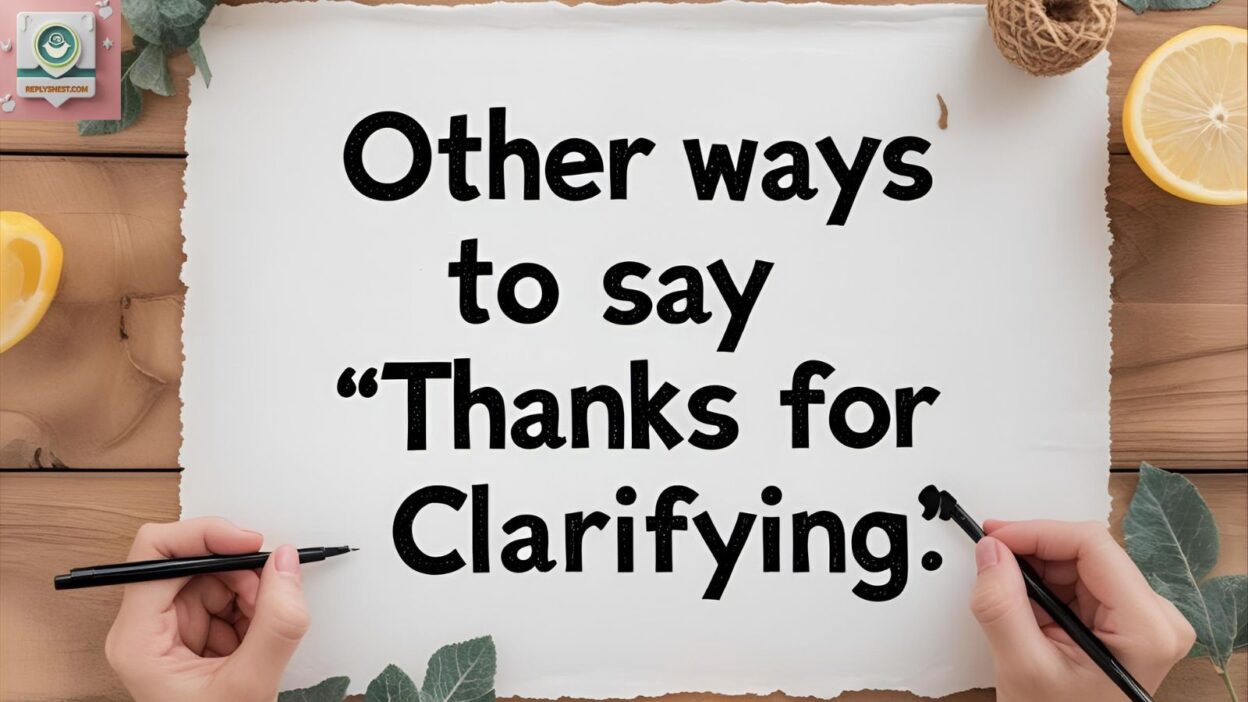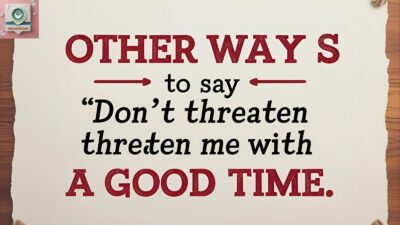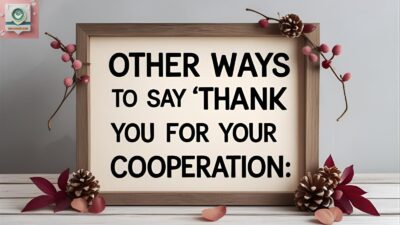In both professional and personal settings, good communication builds stronger relationships. I’ve found over the years that when someone helps me understand something especially in a business or academic setting a simple “thanks” often isn’t enough. If a colleague shed light on a confusing point during a meeting or provided additional details in a complex project, I feel it’s important to go beyond just being polite.
There’s real value in showing appreciation with more depth. Whether through emails, formal messages, or casual conversation, phrases that express gratitude in a more thoughtfully crafted way often leave a better impact. Saying “I appreciate your clarification” or “Thanks for breaking it down so clearly” not only sounds more sincere but fits naturally into today’s diverse dialogue styles.
I remember a situation where I was struggling with a technical concept. A teammate used a great illustration and offered a clearer explanation that truly painted the picture for me. That kind of help deserves more than a generic response.
I said, “Thank you for expounding on that. Your insight was invaluable.” Expressions like “Thanks for clarifying,” “I’m grateful for the elucidation,” or “I acknowledge the effort you put into simplifying it” feel more personal and respectful.
1. I Appreciate the Insight
When someone does more than just clarify they offer real perspective this phrase is perfect. It says you value their point of view and the effort it took to share it.
Best use: When someone adds depth or nuance you hadn’t considered.
Not to use: When the clarification was technical or surface-level.
Other ways to say it:
- “Thanks for shedding light on that.”
- “That really helped me understand the bigger picture.”
Example:
“I appreciate the insight into the client’s needs. It really shifts how I approach the proposal.”
Read More: Best Responses to “What Are You Up To”
2. Thanks for Clearing That Up
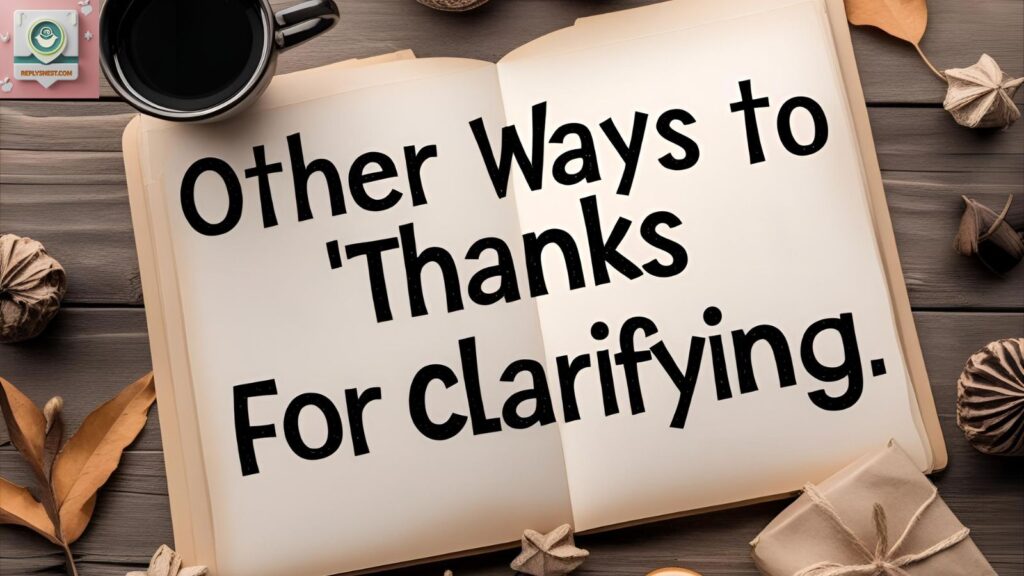
Friendly, easygoing, and polite. This one keeps it light but still acknowledges that you were confused and now you’re not.
Best use: Informal work chats, emails, quick explanations.
Not to use: In highly professional or formal settings.
Other ways to say it:
- “That helps, thank you.”
- “I understand now.”
Example:
“Thanks for clearing that up. I was thinking we were meeting on Thursday.”
3. I’m Grateful for the Clarification
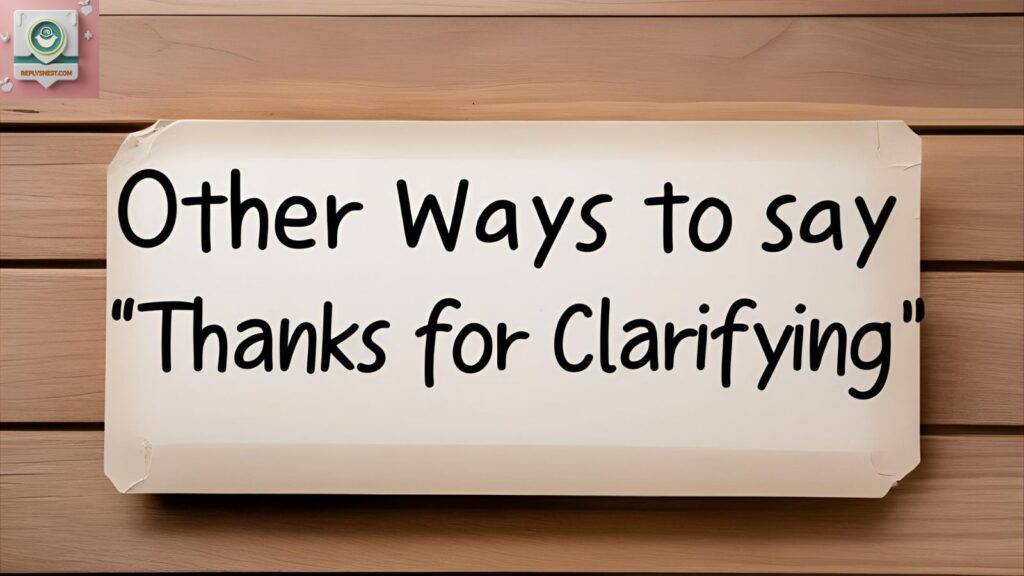
This feels more heartfelt. It works well when the topic was complicated or even a bit tense.
Best use: When misunderstanding created tension, or the clarification made a big difference.
Not to use: For something small it can feel too heavy-handed.
Other ways to say it:
- “Thanks for taking the time to explain.”
- “I appreciate your patience.”
Example:
“I’m grateful for the clarification about the process. I really didn’t know where to start before.”
4. Thank You for Elaborating
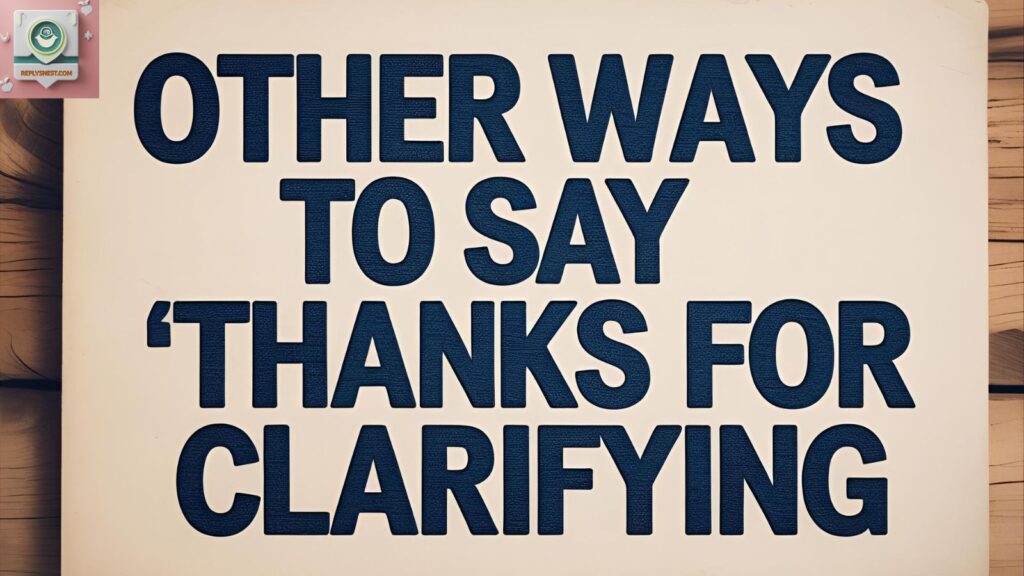
This one works well when someone goes the extra mile not just to explain, but to give you depth.
Best use: When someone gives you thoughtful or detailed clarification.
Not to use: If their explanation was brief or casual.
Other ways to say it:
- “Appreciate the extra detail.”
- “Thanks for breaking that down.”
Example:
“Thank you for elaborating on the timeline. That helps me plan more realistically.”
5. I Value Your Explanation
This communicates that you didn’t just hear them you respect what they had to say.
Best use: When someone opens up or shares something important to them.
Not to use: With strangers or in quick back-and-forths it might feel too personal.
Other ways to say it:
- “Thanks for your thoughtful input.”
- “I appreciate your insight.”
Example:
“I value your explanation of how the policy affects the team. It gives me more perspective.”
6. Thanks for Walking Me Through It
When someone guides you step-by-step, this is a gentle, grateful way to acknowledge their time and effort.
Best use: In situations that involve processes, tutorials, or hand-holding.
Not to use: For one-line explanations it implies more time was spent than actually was.
Other ways to say it:
- “Thanks for taking the time.”
- “That was really helpful.”
Example:
“Thanks for walking me through the software. I feel a lot more confident now.”
7. I See It More Clearly Now Thanks to You
This one feels both appreciative and humble. It says, “You helped me understand,” without overexplaining.
Best use: When someone helps shift your perspective or fill in missing information.
Not to use: If you already understood can feel performative.
Other ways to say it:
- “That clears it up.”
- “Now I get it.”
Example:
“I see it more clearly now thanks to how you explained the team’s goals.”
8. That Clarifies a Lot Thanks
This is casual, positive, and quick great for short messages or team collaboration.
Best use: Fast-paced work settings or short written replies.
Not to use: For deeply personal or formal discussions.
Other ways to say it:
- “That helps a lot.”
- “Appreciate it.”
Example:
“That clarifies a lot thanks. I’ll make the updates right away.”
9. Appreciate You Taking the Time to Explain
Sometimes the effort is as meaningful as the explanation. This phrase honors both.
Best use: When someone takes time out of their day to explain something thoroughly.
Not to use: In very brief conversations.
Other ways to say it:
- “Thanks for the breakdown.”
- “Appreciate the detail.”
Example:
“Appreciate you taking the time to explain the rollout schedule. It really helped me plan.”
10. Thank You for Making That Clear
This is professional, direct, and still warm great for meetings or written feedback.
Best use: When something important gets clarified in a formal setting.
Not to use: In deeply emotional or vulnerable conversations it may sound distant.
Other ways to say it:
- “Thanks for being direct.”
- “Now it’s clear.”
Example:
“Thank you for making that clear. I now understand what the next steps are.”
11. Got It Thanks
Simple, clean, and efficient. Ideal for quick digital communication.
Best use: In Slack, chats, or fast-paced messaging where brevity matters.
Not to use: In heartfelt or emotional discussions.
Other ways to say it:
- “Understood, thanks.”
- “Makes sense.”
Example:
“Got it thanks! I’ll send the file by end of day.”
12. That Makes More Sense Now, Thank You
This phrase gives space to admit past confusion and shows honest appreciation for clarity.
Best use: When something finally clicks.
Not to use: If you’re still confused it might come off as disingenuous.
Other ways to say it:
- “I understand better now.”
- “Thanks for clarifying that point.”
Example:
“That makes more sense now, thank you. I didn’t connect those pieces before.”
13. Thanks for the Clarity
Short, sharp, and perfectly suited for email or professional communication.
Best use: In written conversations, when someone straightens out a detail or process.
Not to use: If the answer was unclear it could seem sarcastic.
Other ways to say it:
- “Appreciate the update.”
- “Thanks for being clear.”
Example:
“Thanks for the clarity around the timeline I’ll adjust accordingly.”
14. Thank You for Helping Me Understand
This is warm and empathetic it acknowledges that the other person taught or guided you.
Best use: When someone helps you learn or process something new.
Not to use: For quick answers it might sound overly formal.
Other ways to say it:
- “Thanks for helping me get it.”
- “That really helped.”
Example:
“Thank you for helping me understand the financial breakdown. It was a big help.”
15. Now I Get It Thanks to You
This one adds a personal touch, acknowledging your own learning and the other person’s role in it.
Best use: Casual conversations, team settings, peer-to-peer chats.
Not to use: With senior leadership or in formal writing.
Other ways to say it:
- “That explains it.”
- “You made it make sense.”
Example:
“Now I get it thanks to the way you walked me through the steps.”
16. Thanks for Taking the Time to Clarify
This recognizes that time and care went into the explanation something we often overlook.
Best use: When someone goes above and beyond to help.
Not to use: In rapid-fire conversations it can sound too formal.
Other ways to say it:
- “Appreciate you clearing that up.”
- “Thanks for being patient.”
Example:
“Thanks for taking the time to clarify the procedure. I really appreciate it.”
17. That Explanation Was Really Helpful
This shows genuine appreciation without sounding robotic. It’s great for moments when you actually feel relieved or more prepared.
Best use: When the clarity improved your understanding significantly.
Not to use: If the explanation was incomplete or confusing.
Other ways to say it:
- “That helped a lot.”
- “I get it now.”
Example:
“That explanation was really helpful. Now I can move forward with confidence.”
18. Ah, That Makes Perfect Sense Now
This one communicates a “lightbulb moment.” It’s friendly and positive.
Best use: When the clarification completely resolved your confusion.
Not to use: In business settings where more formal language is needed.
Other ways to say it:
- “Now I understand.”
- “Everything clicks now.”
Example:
“Ah, that makes perfect sense now. I didn’t realize the changes were already approved.”
19. Thanks for Guiding Me Through That
This expresses gratitude for both clarification and support.
Best use: When someone didn’t just answer, but taught you something.
Not to use: For quick one-line answers.
Other ways to say it:
- “Thanks for showing me the ropes.”
- “Appreciate the walk-through.”
Example:
“Thanks for guiding me through the form it saved me a lot of frustration.”
20. Appreciate the Context You Provided
Clarity often comes from the bigger picture. This phrase recognizes that.
Best use: When someone gives helpful background or context.
Not to use: If the explanation was just procedural.
Other ways to say it:
- “Thanks for the background.”
- “That helped put it all in perspective.”
Example:
“Appreciate the context you provided around the new policy it helps a lot.”
21. Your Clarification Helped Me Understand the Bigger Picture
This is great for strategy sessions, leadership updates, or coaching conversations. It honors the depth of the explanation.
Best use: When the clarification helped connect multiple ideas.
Not to use: For a simple fix it may sound like overkill.
Other ways to say it:
- “It all connects now.”
- “Now I see the full picture.”
Example:
“Your clarification helped me understand the bigger picture for Q3.”
22. I Wasn’t Seeing It That Way Before Thanks
A humble way to say you’ve learned something new.
Best use: When someone gives you a different perspective.
Not to use: When you already fully understood it may feel forced.
Other ways to say it:
- “Thanks for opening my eyes to that.”
- “That’s a new angle for me.”
Example:
“I wasn’t seeing it that way before thanks for reframing it.”
23. Thanks for Helping Me Fill in the Gaps
Sometimes we don’t even realize what we were missing until someone fills in the blanks. This phrase works beautifully in team settings.
Best use: In collaborative conversations where ideas build on each other.
Not to use: With people you don’t know well it can sound too familiar.
Other ways to say it:
- “That completes the puzzle.”
- “Appreciate the missing piece.”
Example:
“Thanks for helping me fill in the gaps in the timeline. Now it’s all clear.”
24. Your Clarification Was Spot-On
Short, confident, and complimentary. This one gives credit where credit’s due.
Best use: When someone gives a pitch-perfect explanation.
Not to use: When you’re trying to remain neutral or noncommittal.
Other ways to say it:
- “Exactly what I needed.”
- “Perfectly explained.”
Example:
“Your clarification was spot-on. That makes it crystal clear.”
25. Thanks for Being So Clear About That
Clarity is a gift this phrase honors that. It’s warm, professional, and direct.
Best use: Honest conversations, setting boundaries, giving feedback.
Not to use: If you’re not actually sure what was meant.
Other ways to say it:
- “Appreciate your transparency.”
- “Thanks for laying it out clearly.”
Example:
“Thanks for being so clear about your expectations for the next meeting.”
Conclusion: Thoughtful Words Matter More Than Ever
Over years of writing, leading teams, and navigating all kinds of professional and personal conversations, one truth has stood out: how you say something is just as important as what you say.
Expressing gratitude for clarity builds trust, invites more open communication, and shows you’re not just listening you’re valuing the person who helped you. These alternatives to “Thanks for clarifying” aren’t just phrases they’re tools for connection, for empathy, and for expressing genuine appreciation in a noisy world.
